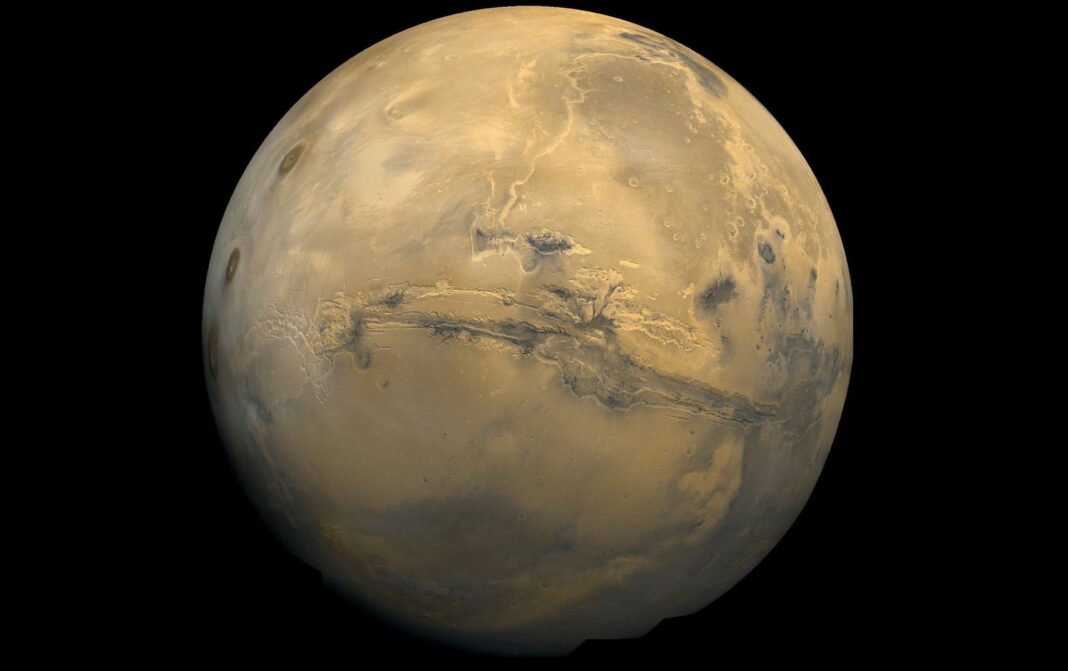The European Space Agency has discovered a huge deposit of water at the bottom of Valles Marineris, the largest and deepest canyon in the solar system. The formation is ten times longer and five times deeper than the Grand Canyon.
The TGO orbital mapped the Wallis Mariner area, examining what is 1 meter below its surface. A curious fact is that the canyon is often shrouded in fog.
“With TGO, we can really understand what’s going on beneath the surface of Mars,” said Igor Mitrofanov, a researcher at the Russian Academy of Sciences and lead author of the study.
“The probe reveals an area of unusually high amounts of hydrogen in the colossal system of the Wallis Mariner Canyon: assuming the hydrogen we see is bound to water molecules, up to 40 percent of the near-surface material in the region appears to be water,” he said.
According to scientists, the water reserves in the Martian canyon are very similar to the permafrost on Earth, where water ice is retained under dry soil due to constant low temperatures.
The area under which there is water in the canyon is the size of the Netherlands.
Much of the water is still likely to be trapped in minerals, but there is reason for optimism.
“In general, we believe that this water is more likely to exist in the form of ice,” Malakhov argued.
This is evidenced by the discovered “irrigation” of soil water on the slopes of the canyon during the summer months.
“This discovery is an amazing first step, but we need more observations to know for sure what form of water we are dealing with,” said Hokan Swedham of ESA, who was previously on the TGO team, in a statement calling for “a large, not too deep, easily usable water tank in this region of Mars.”
It is known that in the past there were at least two oceans on Mars. It is very likely that significant amounts of this water are stored at the poles and below the surface of the Red Planet.









